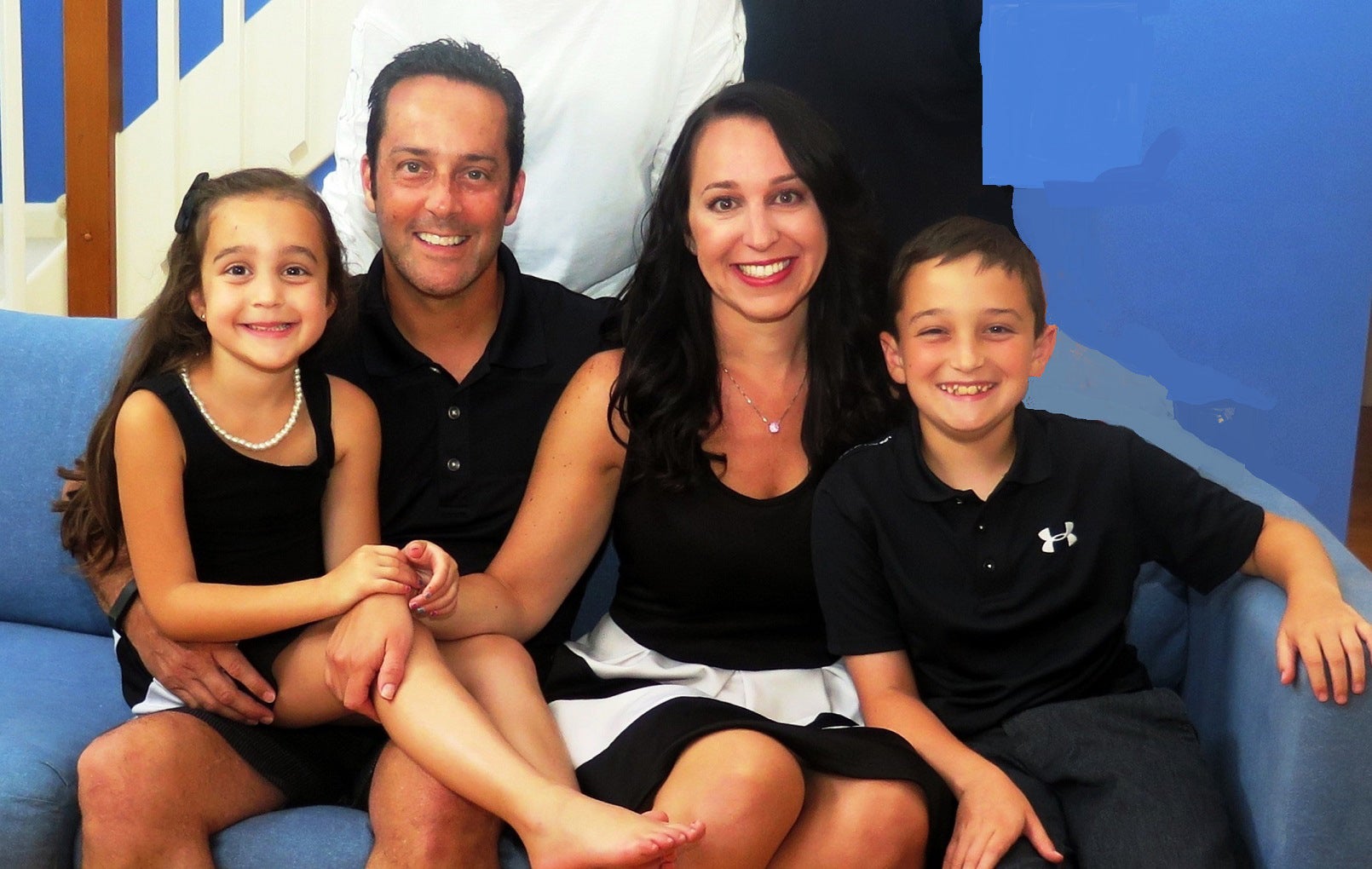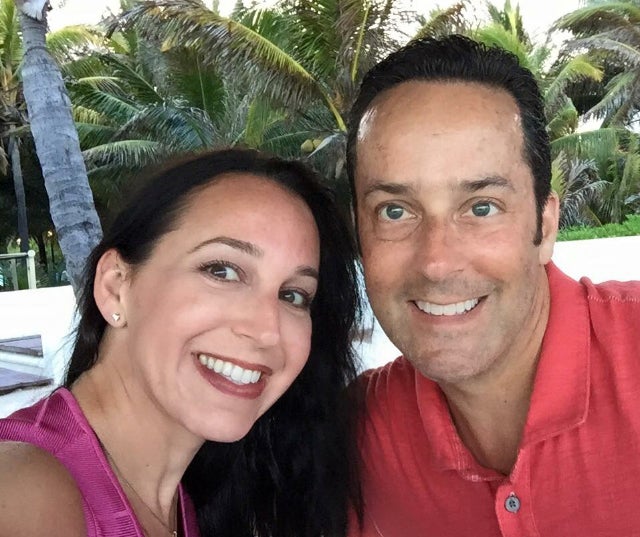The hip pain six doctors couldn't diagnose
Annie Karp worried that the mysterious ache she'd been suffering from would spend a lifetime on her hips, until the moment a specialist found the simple solution

Your support helps us to tell the story
From reproductive rights to climate change to Big Tech, The Independent is on the ground when the story is developing. Whether it's investigating the financials of Elon Musk's pro-Trump PAC or producing our latest documentary, 'The A Word', which shines a light on the American women fighting for reproductive rights, we know how important it is to parse out the facts from the messaging.
At such a critical moment in US history, we need reporters on the ground. Your donation allows us to keep sending journalists to speak to both sides of the story.
The Independent is trusted by Americans across the entire political spectrum. And unlike many other quality news outlets, we choose not to lock Americans out of our reporting and analysis with paywalls. We believe quality journalism should be available to everyone, paid for by those who can afford it.
Your support makes all the difference.As she rose from the dinner table one night in February 2016, Annie Karp winced as she felt a penetrating ache deep in her hips. Unable to straighten up for a minute or two, she took small steps toward the medicine chest in her parents’ Florida home in search of an over-the-counter painkiller. Karp assumed she had pulled several muscles during an overzealous workout earlier in the day.
For the next 11 months, the ache never went away, no matter what Karp tried. Sitting was especially painful, and she began dreading the multiple daily car trips required to shuttle her two children to their activities.
Karp consulted six doctors, none of whom could find an explanation for the constant pain, which sometimes migrated to her pelvis.
“After a while, I just stopped taking about it,” recalls Karp, a 41-year-old self-employed human resources consultant living in Clarksburg, Maryland. “No one wants a whiner or a complainer.” The pain was wearing and worrying, but never unbearable.
Karp decided to stop bouncing from specialist to specialist and focus instead on learning to live with it.
But when the seventh doctor she had seen in eight months told her what he’d found, Karp was elated, even though his solution was an arduous treatment. “I was just so happy to have an answer,” she says.
Perfectly normal
Karp has always been athletic. She began ballet lessons at age three, was on the dance team in high school where she routinely performed splits, taught aerobics in college and even met her husband at a gym. She continued to love running and dancing, although she stopped ballet training at 15. Karp said her hip joints were unusually flexible but had never caused her pain, even though they would briefly lock periodically.
A few weeks after the Florida episode, Karp saw a Maryland orthopaedic specialist in hip problems. She told him that her mother had both hips replaced in her sixties. The doctor did not order an X-ray, but he did watch her walk, then pronounced her hips to be “perfectly normal”. He suggested she see a spine specialist.
The spine specialist, after conducting a brief exam, found nothing.
In April, after the pain radiated from her hip bones to her pelvis and she experienced spotting between periods, Karp saw her gynaecologist. An MRI scan of her abdomen and pelvis revealed a benign ruptured ovarian cyst. The gynaecologist told her that the pain should dissipate soon.

When it didn’t, Karp began the first of 15 visits to a chiropractor. He performed adjustments to realign her spine, which still didn’t help.
In May, she consulted her internist. He ordered a raft of blood tests, all of which were normal except for the level of cortisol, a stress hormone, which was slightly elevated. The internist didn’t think it was significant and told Karp her hips looked normal. He suspected her pain might be gynaecologic.
“At that point, we were sort of grasping at straws,” Karp says. She tried an acupuncture-like technique called dry needling. Sometimes performed by a physiotherapist or naturopath, the treatment involves inserting small needles into muscles to relieve pain. That failed, too.
By August, Karp decided she was done searching for an explanation. “I had had extensive blood work and lots of tests,” she says, and was confident that nothing serious was wrong.
But in October, her mother, visiting from Florida, noticed Karp grimacing as she got up from the sofa. “She couldn’t believe I was still in pain,” Karp recalls. At her mother’s urging, she saw a third orthopaedic specialist. He gave her topical anti-inflammatory cream and suggested cortisone shots might help.
A diagnosis a last
On the day her first shot was scheduled, Karp was unable to obtain it because of a paperwork glitch. The receptionist suggested that Karp see an in-house physiotherapist instead. The therapist asked Karp a question: Are you a dancer?
When Karp replied that she had studied ballet for years and still loved dancing, she said the therapist’s response was unequivocal: “I know exactly what’s wrong with you – and our doctors can’t help you.”
“She used a lot of terms I didn’t understand at the time,” Karp says. She told Karp she was probably suffering from a form of hip impingement – the failure of the ball-and-socket hip joint to move smoothly. Impingement occurs in adolescence, in part from repeated stress, common in ballet. The head of the femur becomes abnormally shaped and no longer fits seamlessly in the acetabulum, or socket, putting the hip at risk of future injury.
The physiotherapist advised Karp to see yet another orthopaedist, Andrew Wolff, who specialises in arthroscopic hip surgery, in which miniature instruments reach damaged areas through small incisions. It is more often performed on shoulders and knees. Relatively few surgeons specialise in hips, a technically demanding procedure.
“I was cautiously optimistic,” Karp says.
At her initial appointment in early December, Wolff did something none of the other orthopaedists had done: he ordered an X-ray of Karp’s hips.
“The X-ray really did show the whole picture,” Wolff says, adding that he was puzzled at the failure of other doctors to order something so basic. “Hers was not subtle.”
The physiotherapist’s assessment turned out to be correct. The X-ray clearly showed that Karp had a disorder called cam-type femoroacetabular impingement. “It was as though my bones were a square peg trying to fit into a round hole,” she says.
A subsequent MRI scan showed that the impingement had shredded the labrum, the band of protective cartilage on the outside of the hip that helps cushion and stabilise the hip socket. Labral tears in dancers, as well as in people who play hockey, football, soccer and other sports, are common.
“If kids mix up their sports a little bit, it might help prevent such injuries,” Wolff says. “Early specialisation [in a sport] has not been great for our kids.”
But not everyone with hip impingement develops pain or other problems. “Some people are totally fine forever,” he adds.
The extreme positions required in ballet are particularly hard on hip joints. Wolff, an official doctor for the Washington Ballet, said that some of his patients have undergone procedures to treat suspected gynaecologic problems that were actually orthopaedic, because the pain can move to the pelvis or back.
Because of the duration and impact of Karp’s symptoms and because her scans showed no sign of arthritis – which would require a hip replacement – Wolff proposed reconstructing both labra with tissue from a donor and smoothing the femoral head to ensure a proper fit.
Karp said that when Wolff told her what was wrong and that her problem was fixable, she felt a mixture of disbelief and excitement. After getting a second opinion, Karp scheduled surgery with Wolff, who performs the 2½ hour outpatient procedure about 300 times annually.
She underwent surgery on her left hip in January and her right hip was fixed in early March. “She’s done fantastic,” Wolff says. “The most common thing we see is people trying to push themselves too hard and too quickly after surgery.
Karp said that now that her pain is mostly gone, she must battle the temptation not to overdo it. It may take as long as a year before she is able to run or dance again. She’s trying to pace herself. “It’s a series of small victories every day,” she says.
© Washington Post
Join our commenting forum
Join thought-provoking conversations, follow other Independent readers and see their replies
Comments